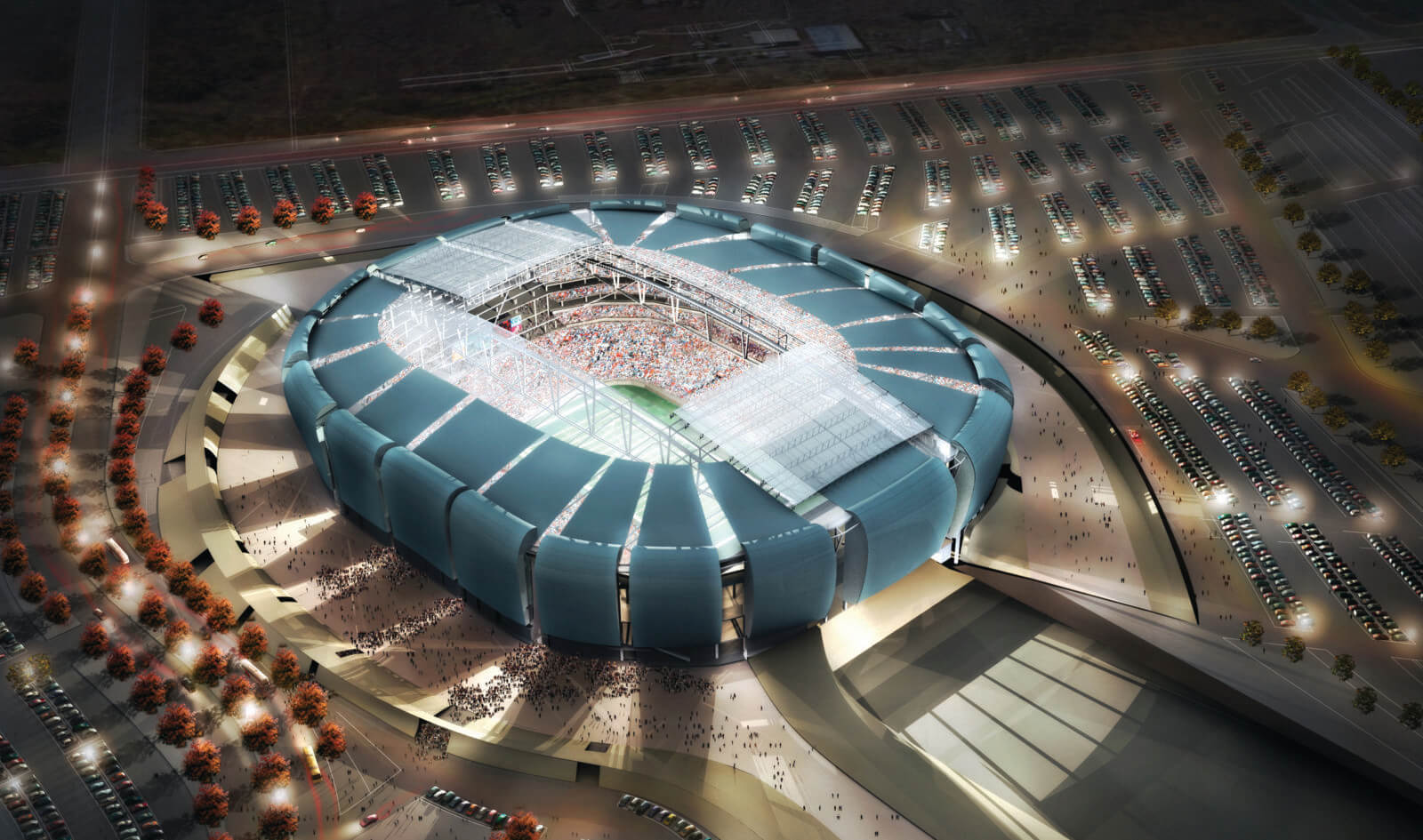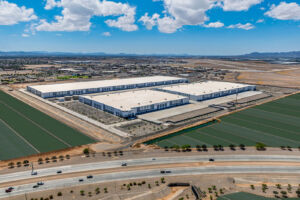The Super Bowl is back in Arizona for the first time since 2015. While fans around the world will be cheering during the Feb. 12 game, civic and economic leaders will be rooting for another reason — or a billion of them.
Eight years ago, the Super Bowl and related events produced a gross economic impact of $719.4 million in the region. This year’s big game combined with the Waste Management Open (Feb. 6–12) and Car Week (Jan. 21–29) is expected to help the Valley surpass the $1 billion mark.
LEARN MORE: 10 cannot-miss Super Bowl week parties in Arizona
That money will make it into the pockets of merchants, business owners, nonprofits and city and state coffers, according to Anthony Evans, a senior research fellow for the L. William Seidman Institute, the consultancy arm of the W. P. Carey School of Business at Arizona State University.
Evans, who tracks the financial impact of Super Bowls, the Cactus League and the Phoenix Open, recently spoke to ASU News about the relationship between high-profile sporting events and the financial windfalls they can bring to state and local governments.
Question: When you first tracked the financial impact of the Super Bowl in 2015 and wrote your first paper/report, what was the biggest surprise to you?
Answer: Coming from Wales, I was more familiar with global football (soccer). But the magnitude of the economic impact in 2015 shows why so many cities compete to host a Super Bowl. There is nothing else like it in the U.S. sporting calendar. For seven to 10 days, a host city becomes the place to be for TV celebrities, Hollywood superstars, singers and sports stars. And many of those lucky enough to have a ticket to the game itself are accompanied by family members who enjoy everything the host city has to offer.
Q: You estimated the Super Bowl had a financial impact of $719.4 million for Arizona. That leads me to believe that the trio of Car Week, the Waste Management Open and the 2023 Super Bowl should easily bring in $1 billion in gross revenue to the state. Can you tell us how Arizona benefits from a financial and exposure point of view?

A: I’ve only researched the impact of Super Bowls and the Phoenix Open, but that’s a fair assumption. There’s a temporary infusion of new dollars into the local economy immediately before, during and after the Super Bowl. These new dollars will come from:
- The two participating teams.
- 90–110,000 visiting fans and their families.
- The NFL.
- Major businesses that host corporate events in the Valley.
- Up to 5,800 visiting media.
State and local governments will benefit from a spike in TPT (sales tax) revenues, hotel/lodging taxes, gas taxes and car rental taxes. For Super Bowl 49, these amounted to over $26 million. The Arizona Commerce Authority, in partnership with city-specific economic development teams, will also leverage the Super Bowl to encourage businesses to relocate to or expand their future operations in the state. For example, 42 business commitments were made by 31 firms that attended 12 major sports events hosted by the Valley between 2015 and 2019. These are conservatively estimated to contribute $28 billion to state GDP over a nine-year time horizon. Of course, that’s not solely down to C-Suite attendance at the sports events, but it’s a key part of the economic development armory.
TV network chat shows will descend on metro Phoenix during Super Bowl week. ESPN will broadcast all news reports from Scottsdale, and the airwaves and print columns will be filled with references to the Grand Canyon State. It might be winter, but the sun will still shine in Arizona, with temperatures in the 70s. If you’re watching the game at home in a state where rain, snow and/or freezing temperatures are the seasonal norm, the significant increase in exposure will make people think about Arizona as a potential winter vacation destination.
Q: How many jobs are created from these series of events?
A: Hotels, bars and restaurants will hire temporary staff to meet the increase in demand or pay existing employees overtime. Golf courses and other visitor attractions statewide will also pay out more in wages for seven to 10 days. But those are simple short-term boosts to employment.
To estimate the ripple effects of the infusion of new dollars into the local economy, economists use input-output models such as IMPLAN. For example, we estimated that the 2015 Super Bowl and Pro Bowl generated around 6,700 job years of employment in Arizona. A job year is not the same as a job. (For example) Kliff Kingsbury had four job years of employment at the Arizona Cardinals but only one job (as head coach). There’s no Pro Bowl in Arizona this year, but the boost to employment will still be significant.
Q: Conversely, what kind of money does Arizona spend on these events, and is the payoff worth it?
A: The biggest cost for hosting a Super Bowl is the stadium. Arizona already has a stadium that meets the NFL’s needs. This is the third time the current stadium in Glendale has been used for a Super Bowl. The NFL has probably insisted on some minor modifications and enhancements to the stadium and local infrastructure, but local taxpayers have avoided the billions of dollars needed to construct a new stadium. There will be some added costs for Valley cities, in terms of policing, emergency services and security, but these will be offset by the infusion of new dollars into the local economy that will help local businesses and generate additional fiscal revenues for state and local governments.
Q: Are there any economic downsides to hosting these three events?
A: Some economists will talk about displacement, which is the idea that people will be discouraged from visiting Arizona because of the Super Bowl; and there is some truth in that. But the reality is that the average cost of a hotel room will be significantly higher, hotel occupancy rates will be higher, and the accommodation and food services revenues generated during a Super Bowl week will far outweigh the average for that time of year. Remember, too, Arizona is a perfect destination for a vacation nine months a year, so any displaced visitors will have plenty of options to visit metro Phoenix at another time.
Q: Why do you believe the Valley of the Sun is an attractive place for high-profile sporting events such as these?
A: A combination of great weather, good sports facilities and plenty of fun things to do before and after game day. We shouldn’t underestimate the importance of people either. The 2023 Super Bowl Host Committee is led by David Rousseau and Jay Parry. They were both responsible for prior Super Bowls held in the Valley, and I believe Jay will also manage the hosting of the 2024 NCAA Final Four. Their expertise and relationships with sports federations built over several years clearly play a part.
Q: Is there more that Arizona officials could do, or are we at the top of our game?
A: When it comes to attracting major sports events, Arizona punches above its weight. This is the fourth time in 28 years the state has hosted the biggest event in U.S. sports. Arizona is due a Final Four for the second time in eight years in 2024. We welcome half of Major League Baseball to the Valley every year for spring training, and TPC Scottsdale annually holds the self-proclaimed “greatest show on grass,” the Phoenix Open. The only event Arizona has potentially missed out on is the 2026 FIFA World Cup. … But that’s not for a lack of trying by stadium officials. The demands and expectations of national and international sports federations increase year over year, as more and more cities compete for the prestige of hosting their events. …
Arizona continually shows itself to be a worthy host for the nation’s signature sports events, but it cannot simply bask in those former glories. The state will have to up its game to stay at the top. Host committees will have to find innovative ways to maximize the appeal to the NFL, PGA, MLB and NCAA. But unlike other states, it already has the expertise within those host committees to rise to that challenge.




